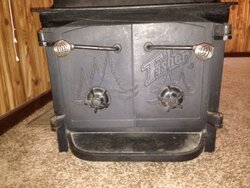Hi,
I just bought an investment property and there was a Fisher Wood Stove/Fireplace in it. I'm having to remove it do to safety issues for my incoming tenants but I was curious if anyone could help me ID this thing.
It has a plate riveted to the back with the Patent number D237788 and the serial number 6693.
Any help would be appreciated as it is real nice and clean but I just don't know anything about these types of things.
Thanks.
I just bought an investment property and there was a Fisher Wood Stove/Fireplace in it. I'm having to remove it do to safety issues for my incoming tenants but I was curious if anyone could help me ID this thing.
It has a plate riveted to the back with the Patent number D237788 and the serial number 6693.
Any help would be appreciated as it is real nice and clean but I just don't know anything about these types of things.
Thanks.


